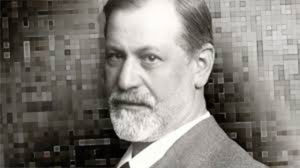Avec un z… on comprend mieux…
Résumé
A travers la relation de quelques jalons d’un itinéraire psychothérapeutique avec un garçon de douze ans présentant une psychose post-autistique, l’auteur tente de restituer les temps forts d’une expérience qui pose, entre autres, la question des limites de l’activité psychanalytique et des conditions préalables qui la rendent possible. Les élaborations interprétatives construites en cours de séance ou dans les intervalles apparaissent clairement, dans ce contexte, comme occupant une fonction importante de soutien de l’activité de pensée du psychothérapeute, souvent menacée de suspension, et de dérivation de l’excitation, lorsque le surgissement d’un sens crée un espace commun, lieu d’une séduction traumatique.
Samenvatting
Dit artikel brengt het relaas van een psychotherapie van een twaalfjarige jongen die aan een post-autistische psychose leed.
De auteur probeert daarbij de bakens uit te zetten van de weg die deze jongen tijdens zijn behandeling volgde en de hoogtepunten van deze ervaring weer te geven. Daaruit kwam de vraag naar voor waar de grenzen liggen van de psychoanalytysche aktiviteit en welke de voorafgaande voorwaarden zijn dit haar mogelijk maken.
De interpretaties, voorbereid en opgebouwd tijdens of tussen de zittingen, blijken in deze kontekst duidelijk een belangrijke ondersteuningsfunktie te vervullen voor de denkaktiviteit van de therapeut, dikwijls door onderbreking bedreigt. Tevens draagt het opbouwen van de interpretaties bij tot het afleiden van de opwinding die ontstaat wanneer het opduiken van een betekenis leidt tot het onstaan van een gemeenschappelijke ruimte, waarbinnen een traumatische verleiding plaats vindt.
Summary
Through an account of some signposts along the therapeutic way of a twelve year old boy presenting a post-autistic psychosis, the author tries to convey the emotionally significant moments of an experience which raises the question, among others, of the limits of psychoanalytic activity and the prequisite conditions which make it possible. The interpretative elaborations constructed during the sessions or in the intervals between them appear clearly in this context to fulfil an important junction of support for the therapist’s thought processes, often threatened by interruption, and by diversion of excitation, when the emergence of meaning creates a common space, place for a traumatic seduction.





